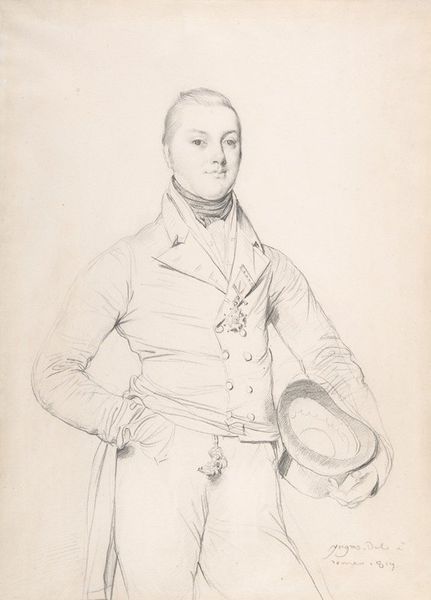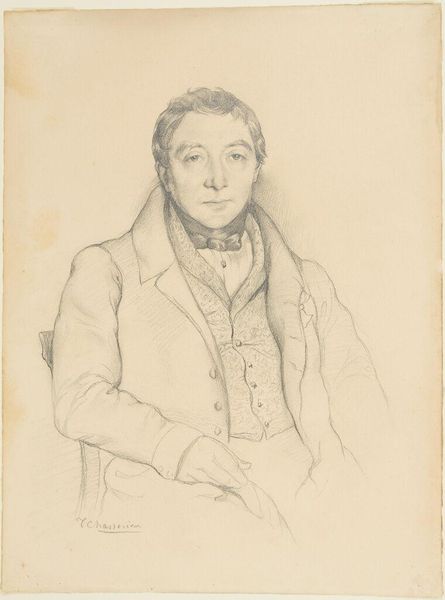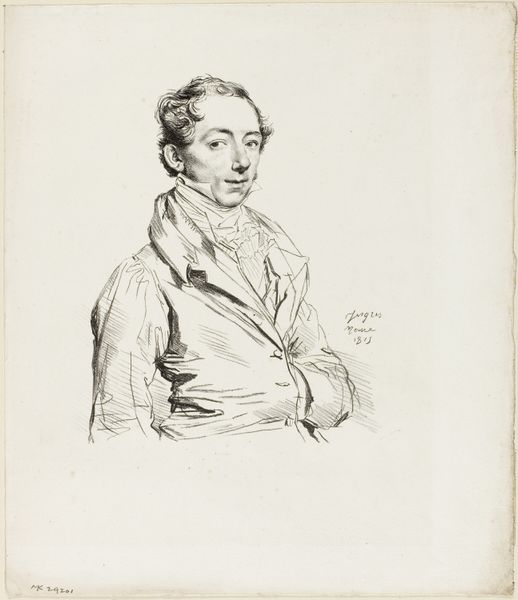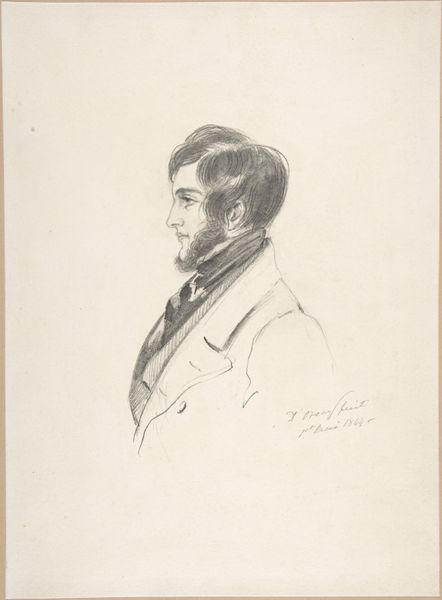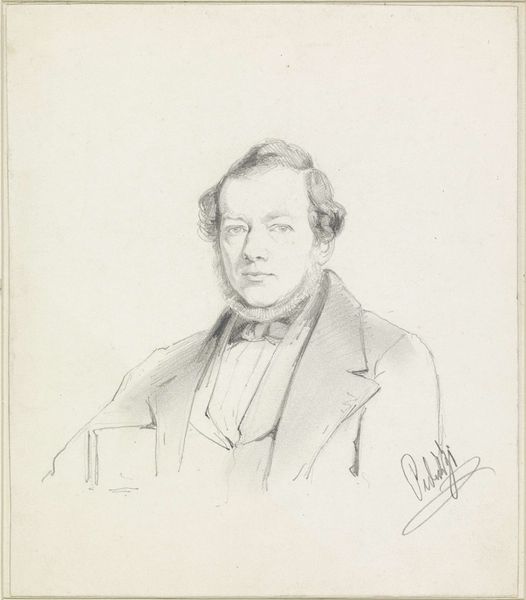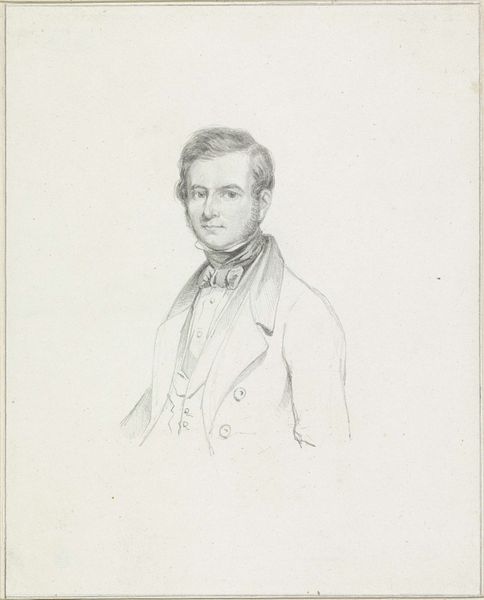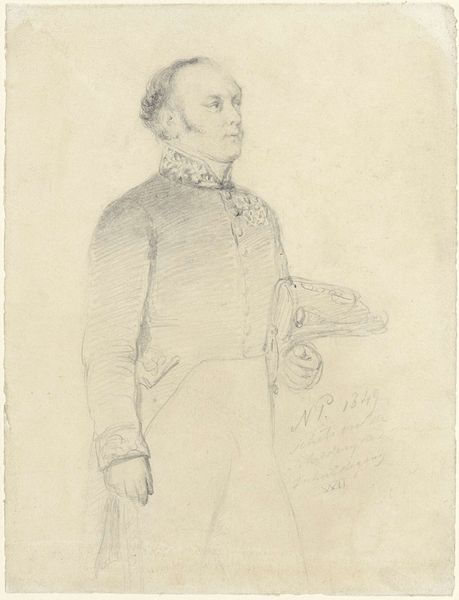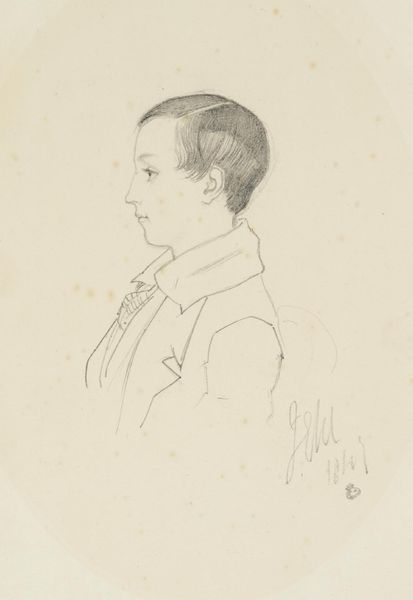
drawing, pencil
#
portrait
#
pencil drawn
#
drawing
#
neoclacissism
#
portrait reference
#
pencil drawing
#
pencil
#
portrait drawing
#
academic-art
Copyright: Public Domain: Artvee
Curator: Looking at this work by Jean Auguste Dominique Ingres, titled "The Lawyer Paul Grand," created in 1834, my first thought is the almost ghostly pallor and the intense scrutiny that is characteristic of pencil work. What captures you? Editor: It’s intriguing, isn't it? The apparent simplicity of materials--pencil and paper—belies the incredible precision Ingres brings. And note the date, 1834—consider what a skilled draftsman had to offer as competition for the emerging photography! It emphasizes drawing as a deliberate choice, a mark of craftsmanship at a time when reproducibility threatened to make handmade portraiture obsolete. Curator: Precisely! The very deliberate nature creates an undeniable sense of presence; even in its somewhat unfinished state. I find his eyes… rather knowing, don't you? Editor: Well, that 'knowing' might stem from the highly specialized, artisanal nature of pencil production at the time. The best pencils, like those from Cumberland, England, were prized for their graphite purity. Sourcing these quality materials—controlling the production—would imbue the process and subject with considerable cultural capital, a material status, which he seems very conscious of in his posture. Curator: Oh, I completely agree about posture; that stiff collar and the almost hidden hands suggest so much about the societal roles he must have navigated. But beyond the material I sense more: an inner landscape of ambition, intellect, and perhaps a dash of vulnerability. It feels like an intimate glimpse. I do get a sense he likes wearing his best pencil lines. Editor: Indeed. Although we can’t overlook that “intimacy” would have been carefully mediated through the sitter's wealth to afford the materials and expertise in the first place! We, viewers, only access an exchange enabled by distinct social power and consumption. The portrait isn't just lines on paper, it’s an encapsulation of economic conditions. Curator: A valid point. Ingres clearly wasn't immune to the patronage system, were any artists during the era of Neoclassicism. Still, it’s quite moving how pencil – the everyday medium we learn as kids— transforms into an aristocratic tool in his deft hands, lending gravitas to the sitter. The sketch lines do feel rather ephemeral somehow. Editor: An exchange! Where everyday becomes the tool for an ambitious artist and sitter to transcend its base materiality— interesting… Ultimately, it reminds me of art’s complex relationship to value: where social, artistic, and, of course, monetary forces merge to shape how we interpret art like this. Curator: Yes! For me, this dialogue with you allows me to approach the portrait as an act of emotional materialisation rather than pure academic work. Editor: And for me, you remind me that, no matter how focused I am on labor and materials, there will always be space to get to that emotion somehow.
Comments
No comments
Be the first to comment and join the conversation on the ultimate creative platform.
